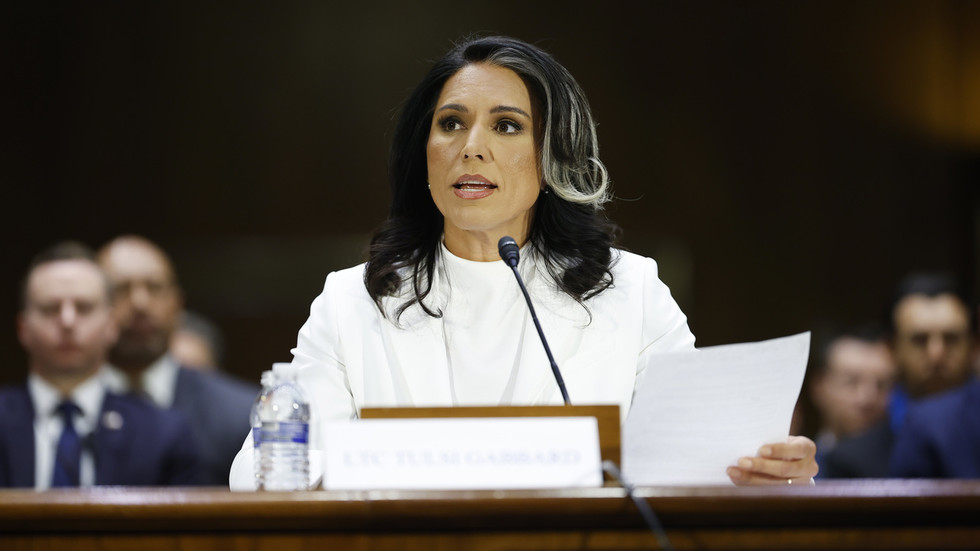The biggest lesson COVID-19 taught hospitals is how thin they can be stretched—and that includes morale, says Dr. Yves Duroseau, chair of emergency medicine and co-chair of disaster planning services at Lenox Hill Hospital in New York.
Over the past nearly-three years, “We saw widespread burnout of staff trying to go above and beyond, every single day. That’s not sustainable—it’s too overwhelming,” he says. “That’s why we’re looking at what to do now, because COVID is still a threat, and now we’re looking at issues like monkeypox and polio. Everyone wonders: What’s next?”
Yet a new pandemic surge is far from the only potentially debilitating event facing hospitals. Most health-care centers are continuously revamping their emergency-preparedness strategies on multiple levels, Duroseau says. Like a seemingly endless action movie, threats fire from all directions. Some vary by location: Hospitals need to be prepared for hurricanes along the Gulf and Atlantic coasts, for example, and earthquakes and wildfires on the West Coast.
Taking steps to plan for the next emergency—even if no one knows exactly what it will look like—can help boost resilience. Here’s a look at the top five challenges hospitals are currently facing, followed by the preparedness plans they’re putting into place.
1. The next epidemic
While COVID-19 may have caught many hospital systems off guard, it highlighted how much an infectious agent can spread—and how quickly. Hospital systems now need to ensure they’re ready next time.
“No one believes we’re past current and future threats when it comes to epidemics and pandemics,” says Eric Alberts, senior director of emergency preparedness at Orlando Health in Florida. “Every hospital is still on high alert when it comes to trying to anticipate what’s next.”
2. Violence inside the hospital
The U.S. Bureau of Labor Statistics reports that the rate of injuries from violent attacks against medical professionals grew by 63% from 2011 to 2018, and the Association of American Medical Colleges (AAMC) notes that it’s only gotten worse since then. In a recent survey conducted by National Nurses United, almost half of nurses who responded said they’d experienced workplace violence, mainly initiated by patients. The situation is so serious that some hospitals have created de-escalation teams to calm aggressive patients.
The emergency department is particularly prone to violent outbursts. In one AAMC study, nearly half of ER physicians said they’ve been assaulted, and 70% of ER nurses report being hit or kicked while at work.
3. Climate change
The U.S. Environmental Protection Agency notes that rising global temperatures are associated with significant changes in weather patterns, which can lead to extreme weather events such as heat waves and droughts, more intense hurricanes, frequent tornadoes, flooding, and wildfires.
Of course, this means that more people will require medical attention due to weather events. But it also sets hospitals up for more disruption and possible closure. When Hurricane Ian hit Florida this fall, 16 hospitals in the state had to evacuate patients. In December 2021, a hospital in Colorado had to evacuate a full neonatal intensive care unit due to wildfires—at a time when it was short-staffed due to winter holidays. Incidents like these will continue to become more prevalent, Alberts believes, putting enormous strain on patients and their caregivers.
4. Cyber threats
Cybersecurity threats against health-care systems have been increasing over the past few years. Ransomware—when an attacker paralyzes a hospital’s computer system and demands a ransom to release it—is particularly on the rise. According to AAMC, this type of cyberattack spiked during the pandemic, with one estimate noting that about 1 in 3 health-care organizations globally were hit by ransomware in 2020.
These incidents don’t just put organizations at risk—they can also affect patient care. For example, in October 2020, the University of Vermont Medical Center suffered a ransomware attack that locked employees out of electronic health records, payroll programs, and other digital tools. Patient appointments couldn’t be scheduled, and most surgeries had to be delayed. Although the health-care system refused to pay the ransom, it estimated that the attack cost $50 million in lost revenue.
5. Limited internal resources
Hospitals that are striving to be well-prepared for emergencies often have to struggle with issues like a lack of funding, says Dr. Russ Kino, an emergency medicine specialist and medical director of the Weingart Foundation Emergency Department at Providence Saint John’s Health Center in California.
“Most hospitals already work on thin margins, and those are contracting as insurers reduce coverage,” he says. “Financially and organizationally, we’re in a tight and difficult place.” Plus, he points out, the average tenure of a hospital CEO is about 18 months. “So you tend to have turnover in leadership, and that can reset all emergency preparedness plans.”
Staffing overall is another issue. According to a report from NSI Nursing Solutions, which surveyed over 3,000 U.S. hospitals in January 2022, the average hospital turnover rate is 25% annually, and even higher for nurses at 27%. At the same time, demand is increasing—the American Nurses Association estimates more nursing jobs will be available in 2022 than any other profession in the country. All of that means that as hospitals need to do more when it comes to emergency preparedness, they’re often accomplishing it with a smaller workforce.
Read More: Caring for the Caregivers Post-Pandemic
How hospitals step up
Although the top threats facing hospitals might sound unrelated—cyber threats and hurricanes don’t seem to have much overlap, for example—they’re connected in part because of the way they need to be dealt with, Duroseau says. Many hospitals utilize several main strategies: planning for the worst-case scenario; conducting training drills for these possibilities; boosting collaboration inside and outside the hospital; and renovating with climate change in mind.
For instance, Providence Saint John’s Health Center regularly executes unplanned drills for active-shooter situations, which help ensure that staff can seal off parts of the hospital and lock down within minutes. Lenox Hill Hospital does the same, and staff there are also trained on potential mass-casualty events that might bring dozens of seriously injured people into the ER at once.
“These types of drills let us see where the gaps are with process and staffing,” Duroseau says. “That’s particularly important during times of high staff turnover, which we experienced over COVID.”
Similarly, Lenox Hill runs drills for cyberattacks that would disable an entire computer system or threaten patient care. Duroseau notes that many pieces of hospital equipment, such as infusion machines that deliver medications, run on a web-based platform, which means they could theoretically be hacked. The idea that a cyberattacker could deliver a fatal dose of pain medication from thousands of miles away is terrifying, he says, which is why the hospital trains staffers on how to switch to a manual, offline system during such a scenario.
“It’s hard to play offense on a cyber situation,” he says. “At least we can train people to handle downtime disruptions in a way that protects patients. In general, we all know the areas of vulnerability we have with every kind of threat, and there’s only so much we can do to counter that. But we can try.”
Another crucial aspect for threat management is collaborating with local and national services like fire departments, law enforcement, the state department of health, and the Federal Emergency Management Agency, Alberts says.
“If you take threats seriously, there’s a lot you can do ahead of time if you plan in advance,” he adds. “Coordination internally and with these external stakeholders truly helps us better prepare for and respond to crises of all types and sizes. Having the right people in the right place at the right time is a big factor for any hospital system’s response to a threat.”
That type of collaborative perspective can help mitigate strain in other ways as well, by creating stronger policies between hospitals and their suppliers, he adds. For example, during the first year of the COVID-19 pandemic, health-care systems struggled to secure sufficient personal protective equipment. That situation is unlikely to happen again since hospitals have developed much more robust purchasing and storage policies, Alberts says.
The same philosophy extends to cyber-attack prevention. For instance, Lenox Hill now works closely with its software providers to ensure there are multiple levels of electronic security protections in place. “We never used to ask our technology vendors what they have built in for security—we only wanted to know about functionality overall,” Duroseau says. “Now, it’s the first thing we consider when [evaluating] a new tech contract.”
Planning for weather events can be more straightforward. Hospital staffers might analyze the type of weather issues that have caused problems in the past—and then magnify those to an extreme degree. For instance, that might mean prepping for record snowfall in North Dakota, fortifying walls for multiple tornadoes in Kansas, building new facilities on higher ground in Florida, or ensuring a fireproof perimeter in California. Some hospitals may even relocate—administrators at several of those damaged by Hurricane Ian have said they’re considering moving inland as a buffer against future storms.
“This is an ongoing issue we’re continually trying to better understand, because the effects of climate change will continue to be a major threat,” Alberts says. “Hurricane Ian showed everyone how much rainfall there can be in such a short amount of time, giving us all a great opportunity to leverage this data for future efforts.”
Looking ahead
One of the toughest challenges in preparing for major threats isn’t unique to hospitals: it’s simply not knowing what’s ahead. As Kino points out, there’s no way to plan for every possible contingency. But there’s always the hope that when a threat evolves, it can be handled with resiliency and efficiency.
“Despite everything that’s happened in the past two years, we know we’re doing amazing and uplifting work,” Kino says. “Even on rough days, we’re still a team, and deep down, we love our jobs—that’s why we’re here. It’s pretty incredible to look back and see what we’ve accomplished through a pandemic, widespread burnout, mass-casualty events, and climate change. We found a way, and I think that’s what is fueling every hospital right now: We know we’ll always find a way.”
More Must-Reads From TIME



:max_bytes(150000):strip_icc()/Health-GettyImages-1417819172-cfe52422160e48dbab87e08102279efa.jpg)



:max_bytes(150000):strip_icc()/Health-GettyImages-1452595913-f748edceade04edda049c4da17f76526.jpg)







